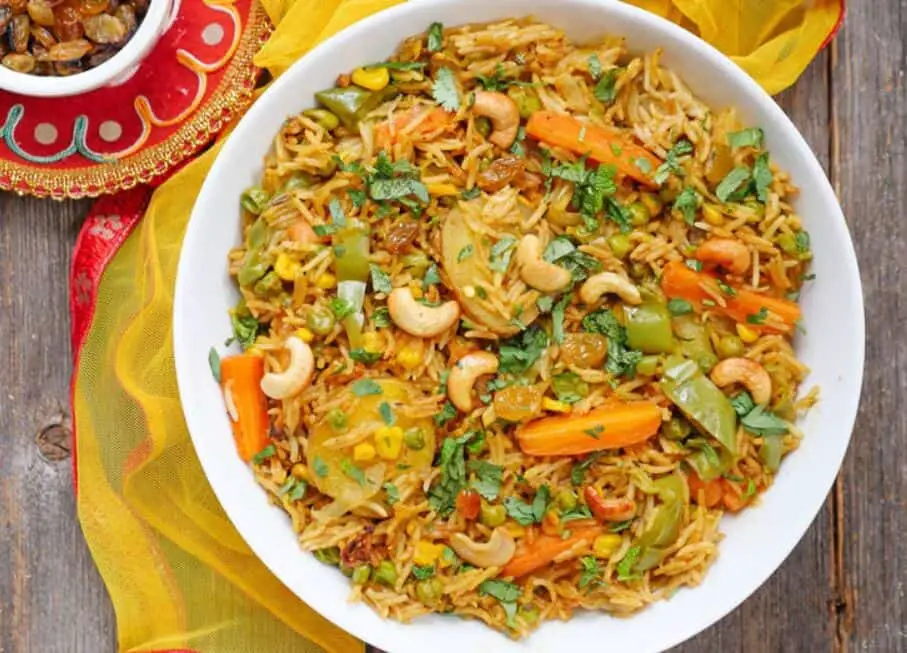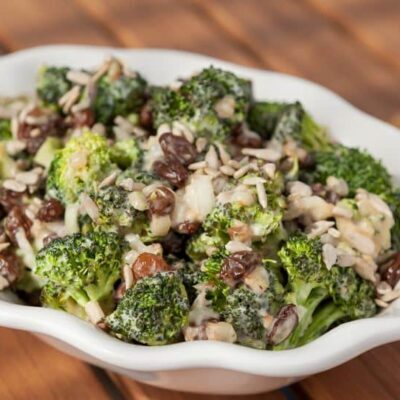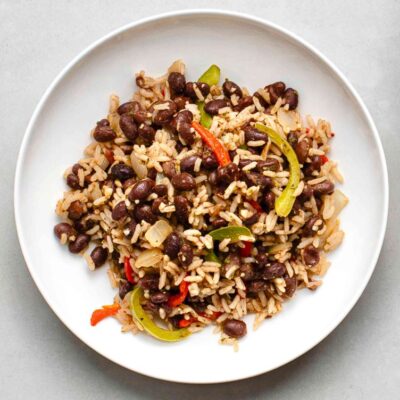Ingredients
-
2 cups long-grain basmati Rice
-
5 Cardamom Pods
-
3 tablespoons GheeIndian Clarified Butter
-
2 teaspoons Garlicfinely chopped
-
2 teaspoons fresh Gingerfinely chopped
-
1.5 teaspoons ground Coriander
-
1.5 teaspoons Allspice
-
2 medium Potatoespeeled and chopped verically
-
1 cup Carrotspeeled and chopped lengthwise
-
1 cup fresh Kernel Corn
-
1/2 cup Eggplantfinely chopped
-
1 medium Onionpeeled and chopped
-
4 cups Water
-
1/2 teaspoon Kosheror sea salt
-
2 medium Green Onionchopped (white and green)
-
3 sprigs Cilantro - Freshchopped
-
1.5 tablespoons fresh Bay Leaves
-
Variation
-
Instead of Ghee, use Butter
-
Instead of Kosher, use Sea Salt
-
Instead of Basmati Rice, use any rice
Steps for Vegetarian Indian Biryani
|
1
Done
5 Minutes
|
Prepare the VegetablesFirst, Peel the vegetables, then chop the garlic, ginger, potatoes (potatoes can be chopped vertically), carrots (can be chopped lengthwise), eggplant, onion, green onion, and cilantro. |
|
2
Done
6 Minutes
|
Cook the riceWash the rice and drain it well. In a medium saucepan over medium heat, combine the rice and 1/3 of ghee and sauté for 3 to 5 minutes, stirring frequently so that the bottom layer of rice does not burn and the rice is evenly coated with ghee. Set aside. |
|
3
Done
27 Minutes
|
Add the veggies and cook furtherIn another pan, melt the remaining ghee and sauté the garlic, ginger, coriander, and allspice for 1 to 2 minutes, stirring frequently to coat them with the butter. Add the potatoes, carrots, corn, cardamom pods, eggplant, and onion and stir for another few minutes. Add the rice and mix well. Add the water, and the salt, and bring to a boil. Reduce the heat to low, cover, and cook until the rice is tender and most of the moisture absorbed (about 15 to 20 minutes). Check the rice periodically to make sure the bottom layer is not burning. Add a small amount of additional water if the water gets absorbed before the rice is cooked. |
|
4
Done
1 Minute
|
The vegetarian Biryani is doneSprinkle with the cilantro, green onion, bay leaf, and serve hot. Enjoy! |
Additional Info for Vegetarian Indian Biryani
Vegetarian Biryani is one special dish, with great flavor and health benefits. No matter if you have adopted a vegetarian lifestyle or you want to include meat, this Indian food is one of the best dishes they have.
Content on this page…
About Indian Vegetarian Biryani Recipe
Vegetarian Biryani is usually fried rice served with meat, fish, or easily available vegetables, and aromatic spices. Fragrant basmati rice is often used, as is ghee (clarified butter), and spices can include cardamom, cinnamon, cloves, nutmeg, fennel, star anise, pepper, cumin, chili powder, turmeric, and saffron. These give the rice its characteristic yellow color.
A world-renowned Indian dish, it takes time and practice to prepare a perfect biryani but is worth every bit of the effort, long-grained rice (like basmati) flavored with exotic spices, such as saffron, coriander, ginger, bay, cumin, cloves, nutmeg mace. The word ‘biryani‘ is derived from a Persian word, birian, which means fried before cooking. It is one of the most popular dishes in India, which has acquired a niche for itself in South Asian cuisine. Vegetarian Biryani is a mixed rice dish with its origins among the Muslims of the Indian subcontinent and is the primary dish in a meal, having complex and strong spices.
For the perfect biryani look, every grain of rice should be separate. The overcooked meshy rice is a nightmare for any biryani lover. Make sure rice is semi-cooked about 70% cooked.
Indian Biryani is better than Pakistani recipe
In my opinion, the Indian version of biryani has a better flavor than the Pakistani one. The vegetarian biryani chosen to write here is the best. All those fresh ingredients mixed with all the exotic spices it’s an explosion of tasty signals for your taste buds.
Vegetarian Indian Biryani is excellent for a weight-loss diet
Another benefit of the vegetarian biryani is that you can lose weight with it, eating in a moderate portion, of course. Biryani is the most-liked and preferred special occasion dish in India. Do you want to keep your taste buds happy while enjoying your favorite lunch or dinner? If so, then you are reading the right recipe. Noticeable benefits of vegetarian biryani include reduced cholesterol levels, reduced triglyceride levels, improved immune system, increase in stamina, and healthy reduction of weight. Vegetables used in your Biryani will keep you young and fit for a long time because is actually very good for health.
Include a healthy Indian dish to your meal plan, just like this vegetarian Biryani
Indian food, though hugely popular, is highly misunderstood. In fact, Indian food includes an array of healthy spices due to which the dishes are cooked in a multitude of ways that help retain their nutrients. Indian food includes carbohydrates, proteins, fats, and all the elements to make a balanced diet. Indian cuisine with its liberal use of healthful and flavorful spices and herbs like ginger, cinnamon, coriander, and turmeric, is full of antioxidants, regardless of its geographic origin.
The presence of lentils, garbanzo beans, and herbs in many dishes also makes Indian food a high-fiber and vegetarian/vegan-friendly option. Many popular and healthy Indian dishes in the United States are cooked in a tandoor, a vertical oven housed in a bell-shaped clay pot that reaches temperatures of up to 900°F. Therefore, it is a great idea to include Indian food to your meal plan, especially once a month.
Healthy plant-based Indian diet
Plant-based diets have been associated with many health benefits, including a lower risk of heart disease and diabetes, and certain cancers such as breast or colon cancer. Additionally, the Indian diet, in particular, has been linked to a reduced risk of Alzheimer’s disease. Researchers believe this is due to the low consumption of meat and the emphasis on vegetables and fruits. Following a healthy plant-based Indian diet may not only help decrease the risk of chronic disease, but it can also encourage weight loss.
If you are new to Indian cooking you’ll like the next few tips:
Whole spices like pepper, bay leaves, cardamom are for aroma only, they release their juices and flavors in rice. Do not eat them, just put them aside as you do with bones. If you don’t like whole spices in rice, you can also wrap these spices in a cloth to form a spice bag. Just remove the spice bag before serving and leave all that delicious flavor behind in your dish!
















